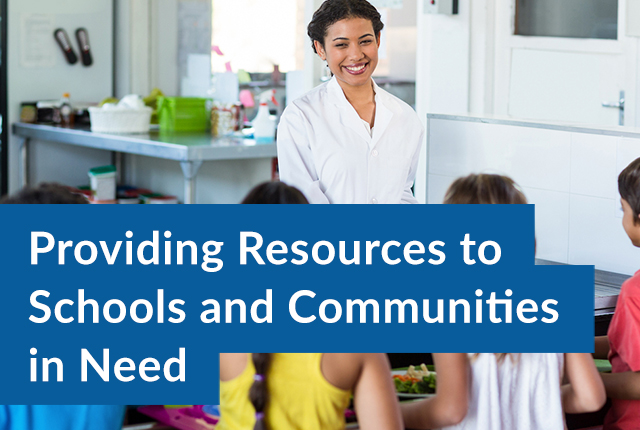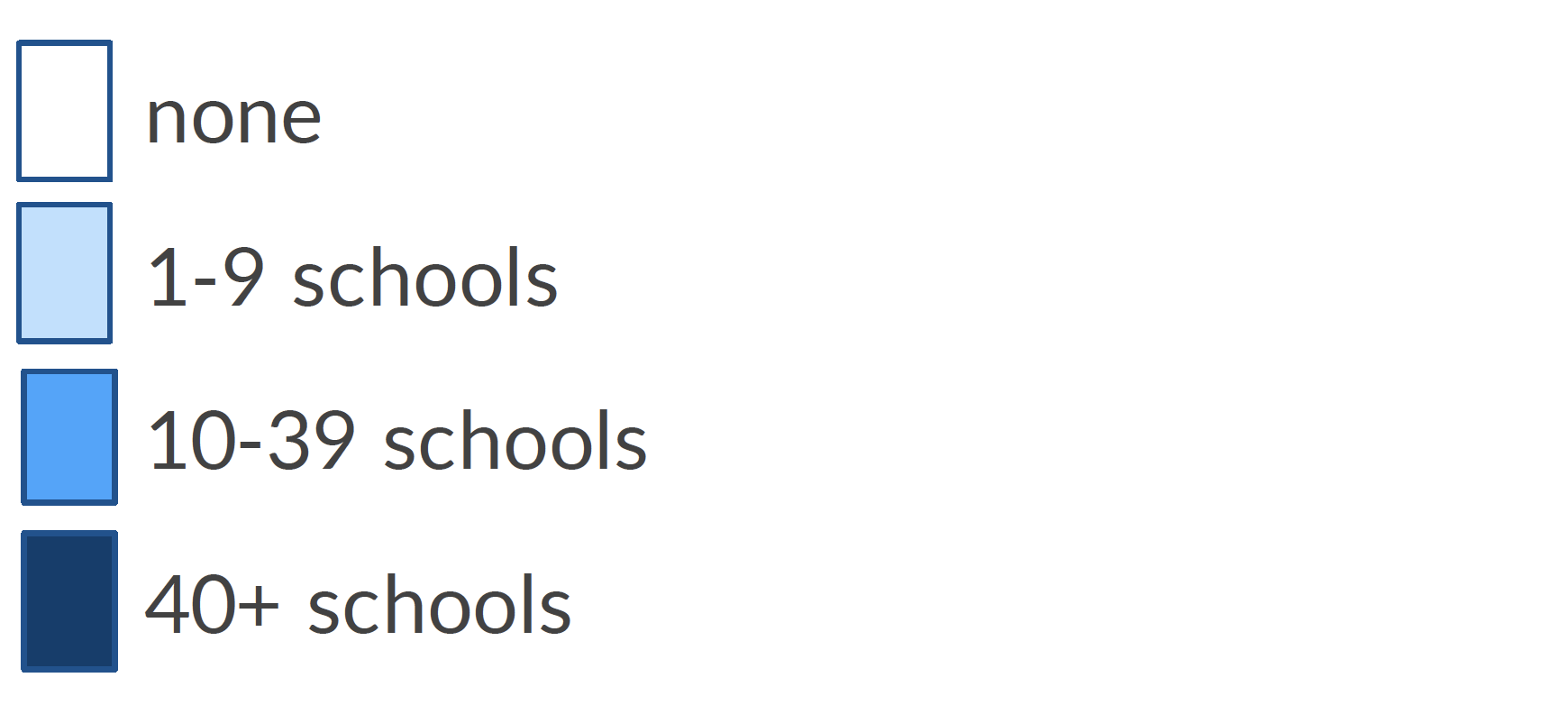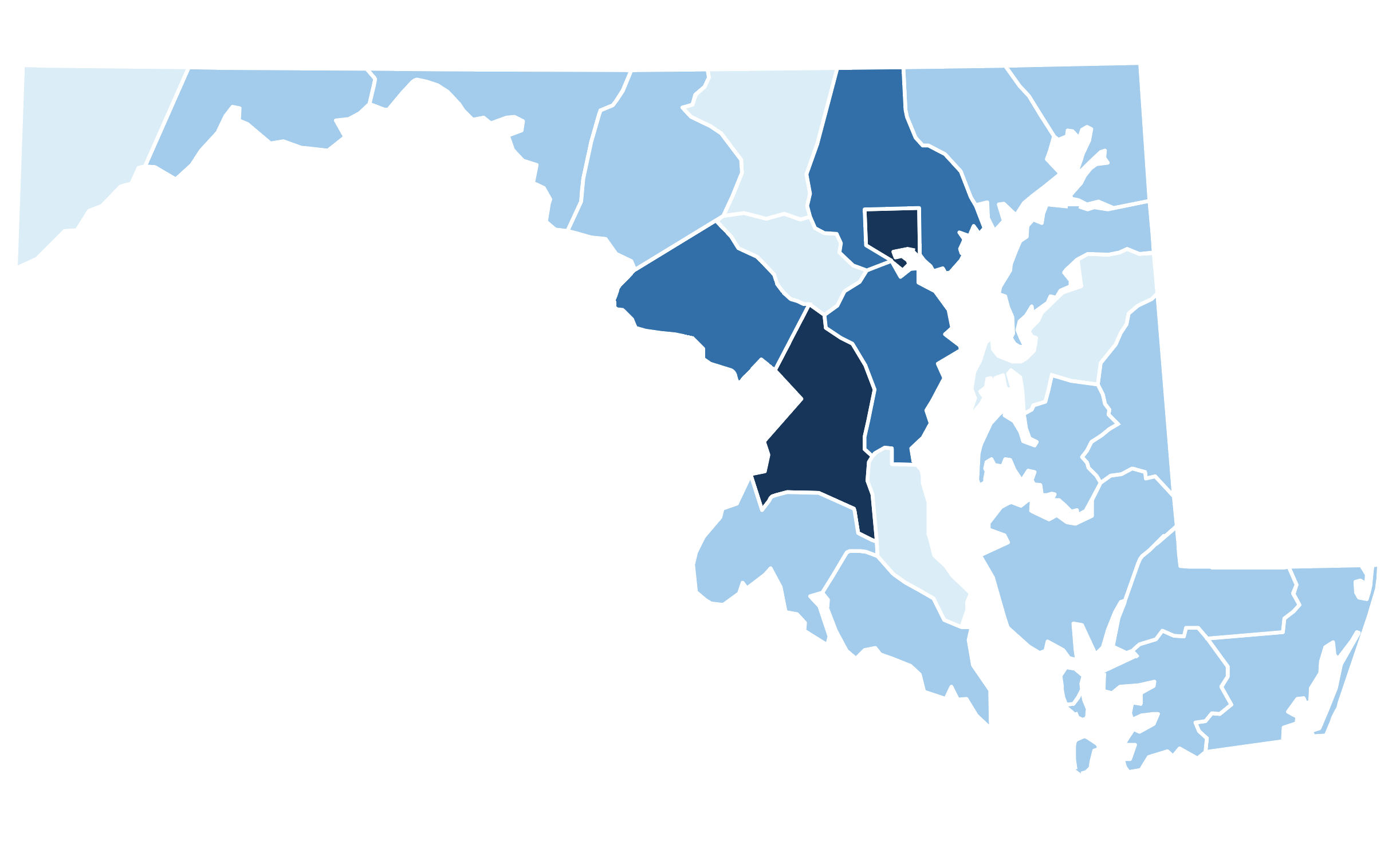

Community Schools + Concentration of Poverty Grants
What is a Community School?
Community schools promote positive, equitable outcomes by providing students and families with the physical and mental health, academic, and extracurricular supports needed to thrive. Community schools serve as hubs that bring families, communities, and partners together to remove barriers to learning. Using an asset-based approach, community schools strive to strengthen connections to generate improved student outcomes.
In Maryland, any school that receives Concentration of Poverty Grants is a community school. Concentration of Poverty Grants provide schools with startup funding and permanent per-pupil dollars to launch and sustain community schools.
Wraparound Services
Community schools work in collaboration with community partners, local governments, and other stakeholders to identify and address structural and institutional barriers to achievement. Leveraging the power of the collective allows community schools to provide resources to students and families where they need it the most—neighborhoods that have been historically underfunded and underserved. Community schools provide a wide array of wraparound services that enhance student’s ability to be successful.
Wraparound Services Identified by the Blueprint
Did you know?
The Maryland State Board of Education and the Maryland State Department of Education hosted a Community Partner Roundtable with a wide range of community school partners and out-of-school time providers to discuss the development of a strategic plan and to hear input and ideas that will shape the future of education in Maryland.
Community School Spotlight: Gaithersburg Elementary
With 700 enrolled students representing a diverse student body of 72% Hispanic and 17.8% African-American students in Montgomery County, Gaithersburg Elementary is a community school that provides services and support for students and their families that go beyond the classroom.
Important Resources
Community Schools + Concentration of Poverty Grants
What is a Community School?
Community schools promote positive, equitable outcomes by providing students and families with the physical and mental health, academic, and extracurricular supports needed to thrive. Community schools serve as hubs that bring families, communities, and partners together to remove barriers to learning. Using an asset-based approach, community schools strive to strengthen connections to generate improved student outcomes.
In Maryland, any school that receives Concentration of Poverty Grants is a community school. Concentration of Poverty Grants provide schools with startup funding and permanent per-pupil dollars to launch and sustain community schools.
Wraparound Services
Community schools work in collaboration with community partners, local governments, and other stakeholders to identify and address structural and institutional barriers to achievement. Leveraging the power of the collective allows community schools to provide resources to students and families where they need it the most—neighborhoods that have been historically underfunded and underserved. Community schools provide a wide array of wraparound services that enhance student’s ability to be successful.
Wraparound Services Identified by the Blueprint
Did you know?
The Maryland State Board and the Maryland State Department of Education held a Community Round Table and engaged with students, families, community school coordinators, partners, and health practitioners to discuss successes and ideas to improve community and school partnerships.
Important Resources
What is the Concentration of Poverty Grant?
In Maryland, a community school is any school that receives Concentration of Poverty Grants. The grants are formula-based and awarded to schools on an annual basis. The determining factor for eligibility is the 4-year average of the percentage of the school’s students living in poverty (excluding 2020-2021 school year), as determined by the compensatory education enrollment. This is essentially the number of students receiving free and reduced price meals.
The Blueprint for Maryland’s Future legislation provides Concentration of Poverty Grants for personnel and wraparound services in community schools and requires needs assessments and implementation plans to be submitted to the Maryland State Department of Education.
There are two types of Concentration of Poverty Grants
Community Schools in Maryland
Currently in FY 2024, there are 621 community schools in Maryland receiving Concentration of Poverty Grants. Explore the map below to view the number of community schools in each of the local school systems.*
Currently in FY 2024, there are 621 community schools in Maryland receiving Concentration of Poverty Grants. Browse the list below to view the number of community schools in each of the local education agencies.*

| County/City | Number of Community Schools |
|---|---|
| Allegany County | 14 |
| Anne Arundel County | 38 |
| Baltimore City | 152 |
| Baltimore County | 92 |
| Calvert County | 0 |
| Caroline County | 8 |
| Carroll County | 2 |
| Cecil County | 9 |
| Charles County | 10 |
| Dorchester County | 11 |
| Frederick County | 9 |
| Garrett County | 5 |
| Kent County | 3 |
| Howard County | 8 |
| Montgomery County | 53 |
| Prince George’s County | 131 |
| Queen Anne’s County | 1 |
| Somerset County | 7 |
| St. Mary’s County | 3 |
| Talbot County | 2 |
| Washington County | 18 |
| Wicomico County | 23 |
| Worcester County | 6 |
*As of July 1, 2024

